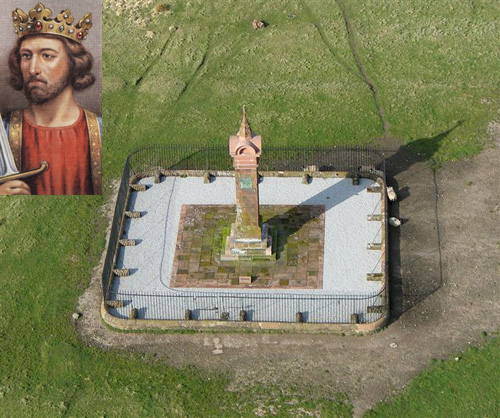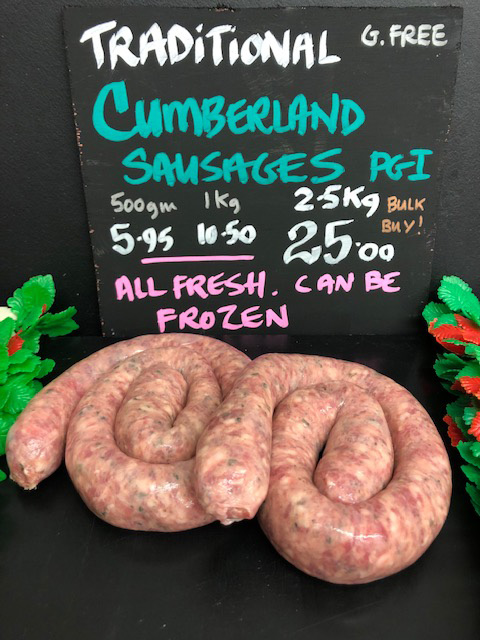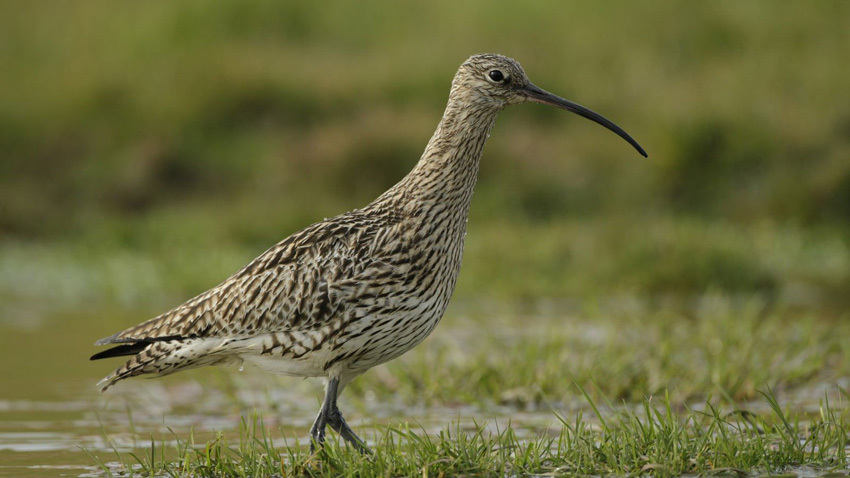




Back to the Cumbria Page

- The Royal Connection
- Cumbria Eats
- Owlbut's Birdwatch
- Cumbria VIPs
 Edward I was King of England from 1272
until 1307. He died at Burgh by Sands in Cumbria after an attack of dysentry while on his way for yet another battle with the Scots. As you can see there is now a
memorial, it is said, at the very spot where he died. At the time he was 68 years old and not in good health. The story goes that his servants went in to wake
him in the morning, tried to lift him up so he could eat and he died in their arms.
Edward I was King of England from 1272
until 1307. He died at Burgh by Sands in Cumbria after an attack of dysentry while on his way for yet another battle with the Scots. As you can see there is now a
memorial, it is said, at the very spot where he died. At the time he was 68 years old and not in good health. The story goes that his servants went in to wake
him in the morning, tried to lift him up so he could eat and he died in their arms.
He had spent several years trying to bring the Scots under English rule having previously achieved this with the Welsh. One of his legacies is the
number of castles he had built in Wales. He was known as Edward Longshanks because he was over 6ft 2in tall, which in those days was very tall. There are several
stories about his deathbed scene although if the above story is true I'm not sure he would have had one. One story said he wanted his heart carried to the Holy
Land along with an army to defeat the non-Christians that the crusaders had been fighting. Edward had been on such a crusade in 1272 when his father died and it
took him 2 years to get home to be crowned. Another story, a bit too similar for my liking, said he wanted his bones carried along on future battles against the
Scots.
Edward married twice and had at least sixteen children with his first wife (yes, read it again) and three more with his second. Most of the children
died shortly after birth and only one son from his first marriage survived Edward. He was also called Edward and amazingly became Edward II.
![]() Back to the top
Back to the top
 I had several choices here. Kendall Mint
Cake is a sugar-based sweet, made in Kendall, which was originally marketed as an energy source, and Grasmere Gingerbread which was invented by a cook called Sarah
Nelson who lived at Church Cottage in Grasmere where she sold her spicy, sweet, chewy concoction from a table outside her front door to any passers-by. That cottage
is now the Grasmere Gingerbread Shop. Feel free to check these out but, as a type-2 diabetic I decided to curl up with a Cumberland sausage.
I had several choices here. Kendall Mint
Cake is a sugar-based sweet, made in Kendall, which was originally marketed as an energy source, and Grasmere Gingerbread which was invented by a cook called Sarah
Nelson who lived at Church Cottage in Grasmere where she sold her spicy, sweet, chewy concoction from a table outside her front door to any passers-by. That cottage
is now the Grasmere Gingerbread Shop. Feel free to check these out but, as a type-2 diabetic I decided to curl up with a Cumberland sausage.
The Cumberland sausage, Cumberland was a large part of what has become Cumbria, is a very long sausage which is either sold in a flat, circular coil.
or in long curved lengths. They have been around for over 500 years and in the past it was more highly seasoned which may have been due to the spices unloaded
from the ships at the port of Whitehaven.
The sausage is made with chopped pork rather than minced and so the sausage has a chunkier appearance. In March 2011 Protected Geographical Status was
granted to the name Traditional Cumberland Sausage. To gain the PGI award the sausage must be produced, processed and prepared in Cumbria and have a meat content
of at least 80%. It must include seasoning and be sold in a long coil. Sausages not meeting these rules can still be sold as Cumberland sausages but can not use the
word traditional.
Black pepper is the traditional spice added to the pork with a mixture of thyme, sage, nutmeg and rusk. Individual butchers have their own
recipes within that basic criteria. The traditional sausage will have a fairly spicy taste.
![]() Back to the top
Back to the top
The curlew is the largest European wading bird and you can spot it immediately by its downcurved bill or beak, which is
black, brown and red and thin and long. Its feathers are brown, cream, buff, grey and white and they have long, blue legs, probably through standing in cold water.
No, I made that up.
They can be found around the whole UK coastline with large concentrations found at Morecambe Bay and on the Solway Firth, both in Cumbria. See how
clever I am? They can also be seen on farmland, grassland and moors, anywhere near water. They eat worms, shellfish and shrimps.
They are about 55 cms in length, have a wingspan of between 80 and 100 cms and can weigh anything between 600 grams and one kilogram. The females are
usually heavier than the males. There are about 66,000 breeding pairs in the UK. You can see them in their breeding habitat from April to July while the greatest
number of birds in coastal areas is during January and February..

Seven random people who were born in Cumbria in the last 100 years:-
Helen Skelton (TV Presenter/Actor), the late Emlyn Hughes (International Footballer), Christine McVie (singer), Eddie Stobart (Businessman), Bunty James (TV Presenter),
Mark Cueto (International Rugby Player) and Melvyn Bragg, Baron Bragg (Author/Broadcaster)
![]() Back to the top
Back to the top

